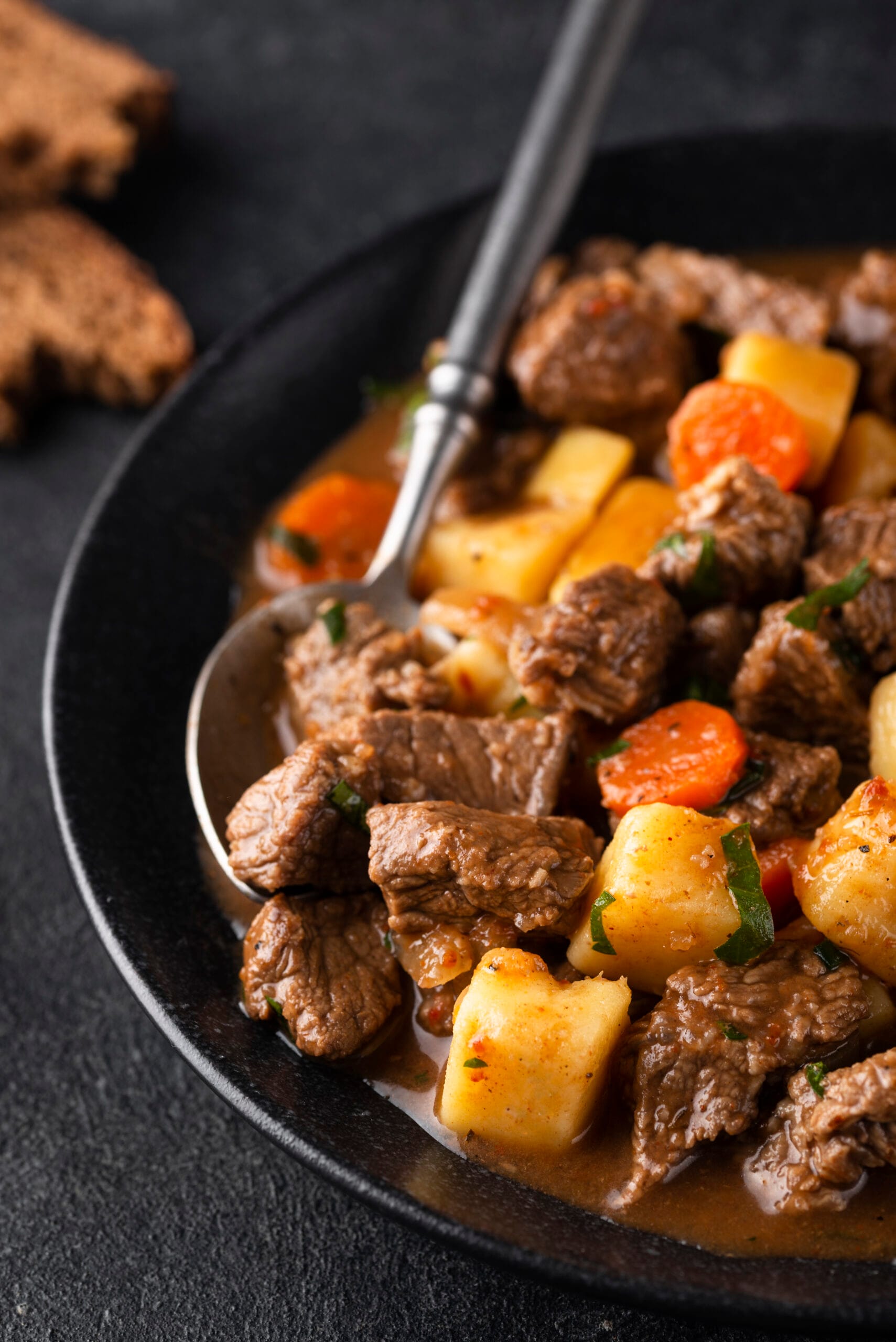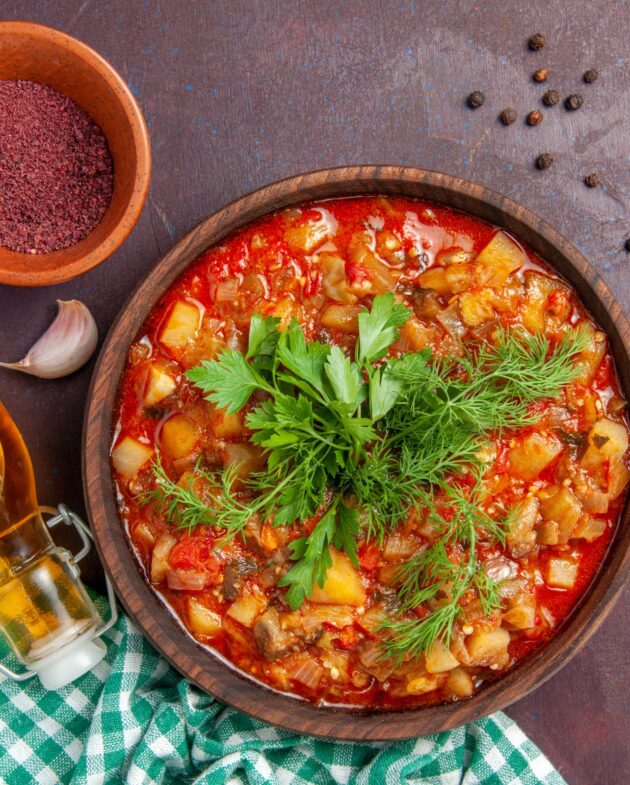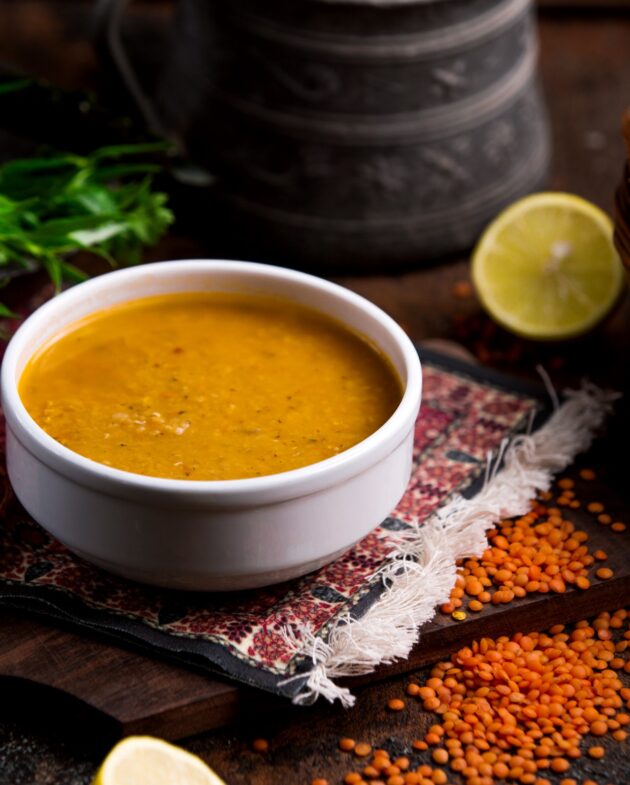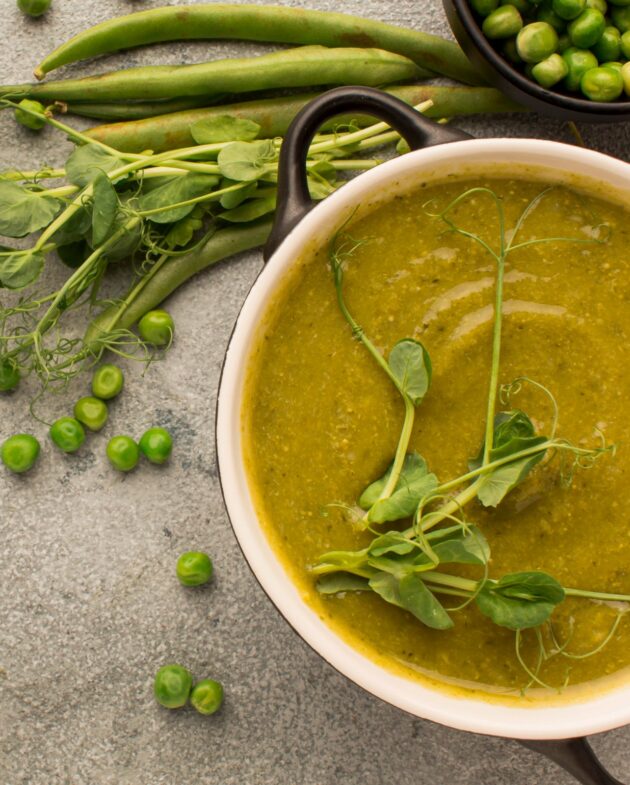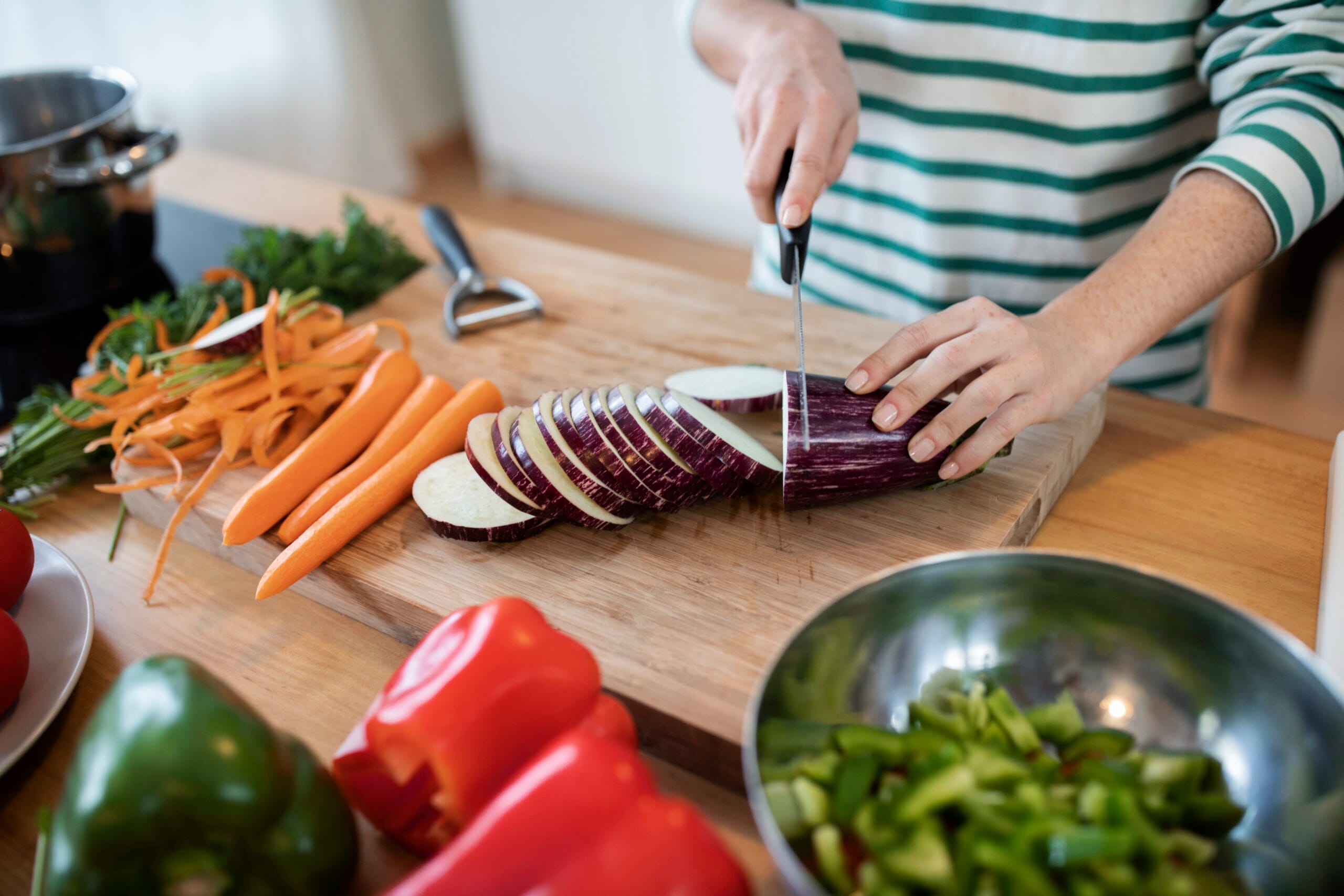- Prepare and Organize Your Ingredients
Begin by dicing the onions, peeling and cubing the carrots and potatoes (if using), and cutting the beef into 1-inch chunks. Set all ingredients aside in small bowls for easy access during cooking. Having everything prepped before you begin will help the process go smoothly and avoid overcooking any one step.
- Sauté the Onions
In a large, heavy-bottomed pot or Dutch oven, melt the butter (or lard for a traditional version) over medium heat. Add the diced onions and cook them slowly for about 8–10 minutes, stirring frequently, until they become soft and golden. This forms the flavor base of the goulash, so don’t rush this step.
- Bloom the Spices
Add the caraway seeds and sweet Hungarian paprika directly into the onions. Stir constantly for about 30 seconds to let the spices bloom in the hot fat. This releases their full aroma and deepens the flavor of the dish. Avoid letting the paprika burn—it becomes bitter if overheated.
- Add Flour and Brown the Beef
Stir in the all-purpose flour and cook it for about a minute, mixing well to coat the onions and spices. Then add the beef cubes and cook for 5–7 minutes, turning to brown them lightly on all sides. Browning helps lock in flavor and creates a slight crust that enriches the stew.
- Build the Broth Base
Pour in the beef broth and add the drained diced tomatoes. Stir everything together thoroughly, scraping up any browned bits from the bottom of the pot. Season with salt and black pepper. Bring the mixture to a gentle simmer to start melding the flavors.
- Simmer Slowly for Tender Meat
Reduce the heat to low, cover the pot with a lid slightly ajar, and let it simmer gently for 1½ to 2 hours. Stir occasionally to prevent sticking. This slow simmering process allows the beef to become tender and soak up the rich flavors of the paprika broth.
- Add the Vegetables (Optional)
If you’re using carrots and potatoes, add them after about an hour of simmering. Stir them into the stew and continue to cook for another 30–40 minutes, until they are fork-tender. The potatoes will also help naturally thicken the broth as they cook.
- Final Adjustments and Serve
Once the beef and vegetables are tender and the broth has thickened slightly, taste and adjust the seasoning. Add more salt or pepper if needed. If the stew is too thick, loosen it with a splash of broth or water.
Serve hot, garnished with chopped fresh parsley and, if desired, a dollop of sour cream for a creamy finish. Pair with crusty bread, spaetzle, or rice to complete the meal.
- Calories: ~325 kcal Protein: ~27g Fat: ~14g Saturated Fat: ~5g Carbohydrates: ~22g Dietary Fiber: ~4g Sugars: ~4g Cholesterol: ~75mg Sodium: ~500mg (based on low-sodium broth) Vitamin A: ~85% DV (from carrots and paprika) Vitamin C: ~20% DV Iron: ~20% DV Calcium: ~4% DV
- Protein:27 g
- Fat:14 g
- Saturated Fat:5 g
- Carbohydrates:22 g
- Sugars:4 g
- Cholesterol:75 mg
- Sodium:500 mg
- Vitamin A:85% DV%
- Vitamin C:20% DV %
- Iron:20% DV %
- Calcium:4% DV%
Hungarian Goulash Recipe is more than just a traditional dish—it’s a cultural treasure. Rooted in centuries of Hungarian cooking, this hearty stew blends the simplicity of rustic ingredients with the rich, deep flavors of paprika, slow-cooked meat, and sweet onions. It’s comfort food at its best—warming, satisfying, and steeped in history.
This dish isn’t just for cold winter nights. Whether you’re serving a crowd or meal prepping for the week, this Hungarian Goulash Recipe adapts beautifully to modern kitchens while still honoring its heritage.
Why This Traditional Goulash Stands Out
Unlike creamy stews, Hungarian goulash achieves its depth without heaviness. The flavor comes primarily from Hungarian sweet paprika and caramelized onions, which create a naturally thick, fragrant base. Caraway seeds add a subtle, earthy aroma, while tender chunks of beef and vegetables give it substance.
The result? A comforting bowl that feels nourishing but not overly rich—ideal for anyone seeking satisfying meals without excess dairy or fat.
Easy Hungarian Stew for Every Kitchen
The beauty of this Hungarian Goulash Recipe lies in its flexibility. Prefer it thick and stew-like? Simmer it uncovered longer. Want a soupier version? Add more broth. This dish accommodates your preferences and cooking tools. It works beautifully in a Dutch oven, slow cooker, or Instant Pot.
Want to make it spicy? Toss in a pinch of hot paprika. Prefer a mild version? Keep it simple and sweet. From busy weeknights to lazy Sundays, this goulash adapts to your life.
Nutritional Benefits of Hungarian Goulash
This isn’t just comfort food—it’s surprisingly balanced too. Lean stewing beef brings protein for muscle repair and satiety. Carrots and potatoes offer fiber, vitamin A, and potassium. Paprika contains antioxidants like capsaicin and vitamin A, while caraway seeds promote digestion.
Healthier Tips:
- Use olive oil instead of lard.
- Go low-sodium with broth and tomatoes.
- Add more vegetables like mushrooms, zucchini, or celery.
- For gluten-free diets, skip any flour and let potatoes thicken the dish naturally.
Make-Ahead Hungarian Goulash Tips
One of the best things about goulash is how well it stores. It’s a meal-prep superstar:
- Fridge: Lasts up to 4 days.
- Freezer: Keeps well for 3 months in airtight containers.
- Flavor Bonus: It actually tastes better the next day as the spices and broth settle together.
You can also save time by mixing your dry spices in advance or chopping veggies ahead of time.
Serving & Customizing Your Hungarian Goulash Dish
Traditionally, Hungarian goulash is served with rustic bread or noodles. You can also pair it with:
- Spaetzle or egg noodles
- Brown rice or mashed potatoes
- Pickled vegetables
- Crusty bread with butter
- A dollop of sour cream and chopped parsley
To make it vegetarian, swap meat for lentils and mushrooms. For a richer finish, add a splash of red wine or tomato paste while simmering. The possibilities are endless.
Final Thoughts on Hungarian Goulash
This Hungarian Goulash Recipe proves that you don’t need fancy ingredients to make a deeply satisfying meal. It’s simple, soulful, and adaptable—perfect for sharing with family, feeding a crowd, or preparing ahead.
Whether you stick to the traditional version or make it your own, one thing is certain: goulash is more than a stew—it’s a connection to culture, comfort, and home-cooked joy.

